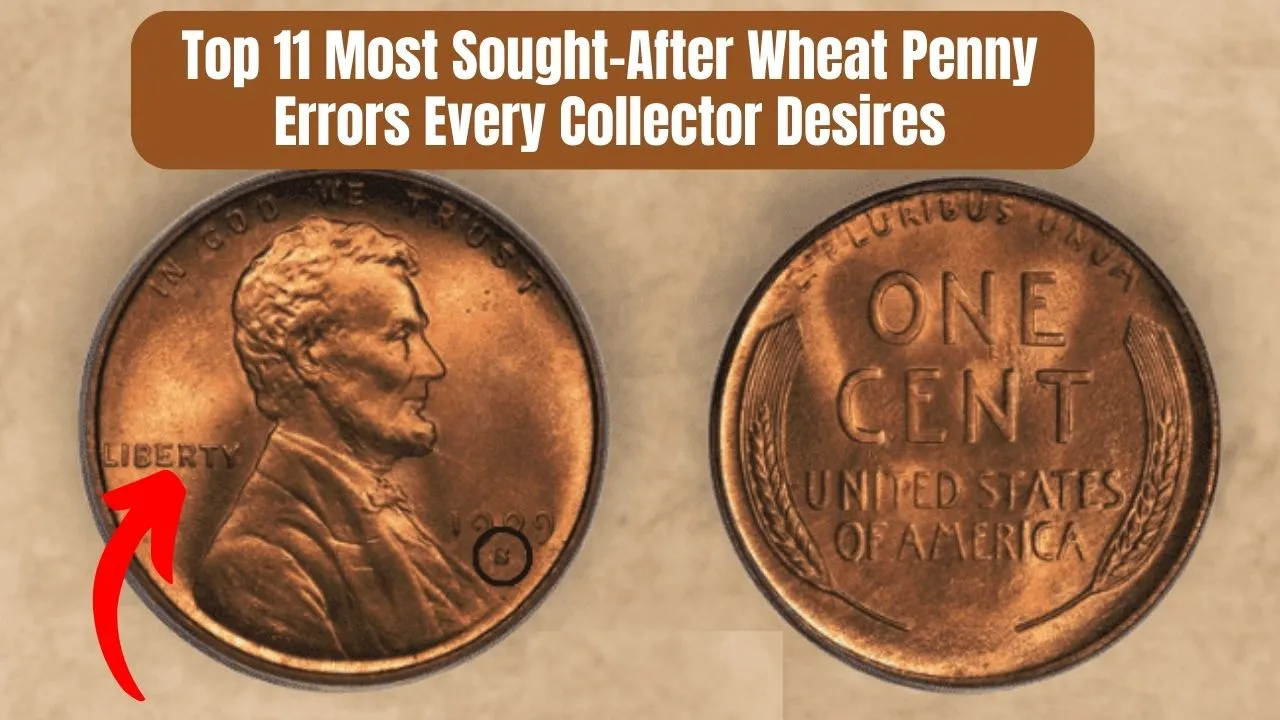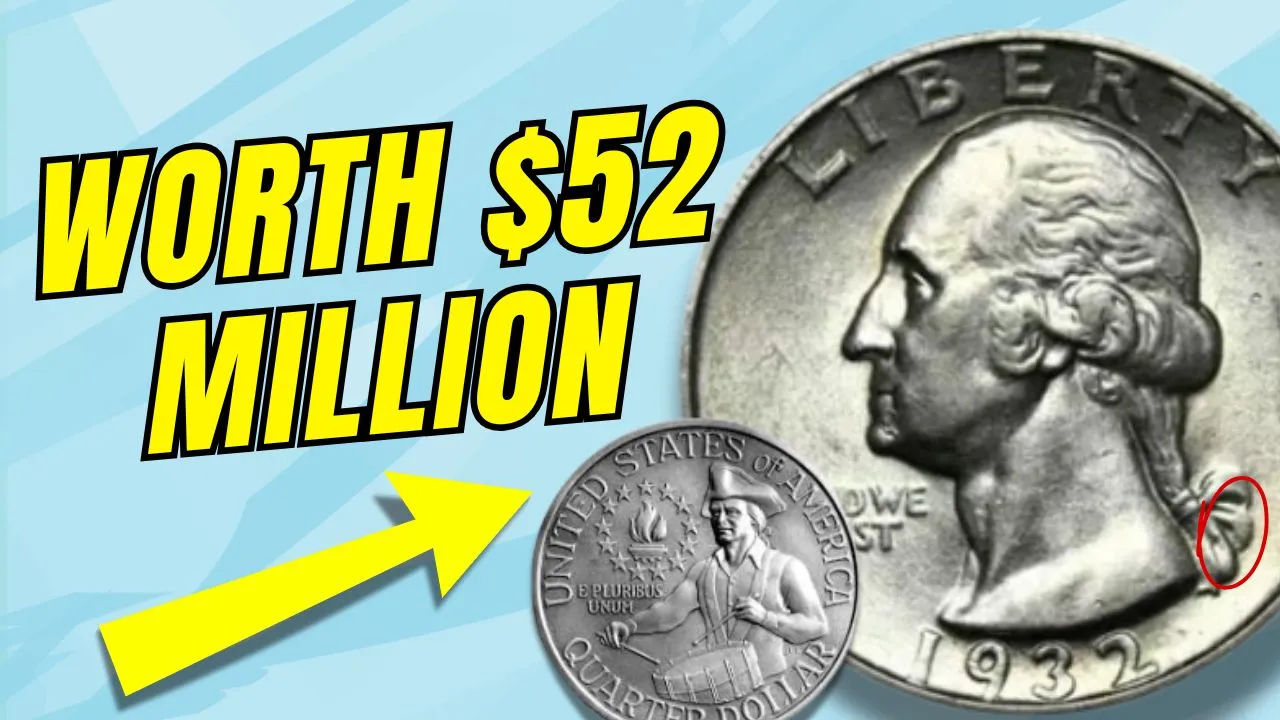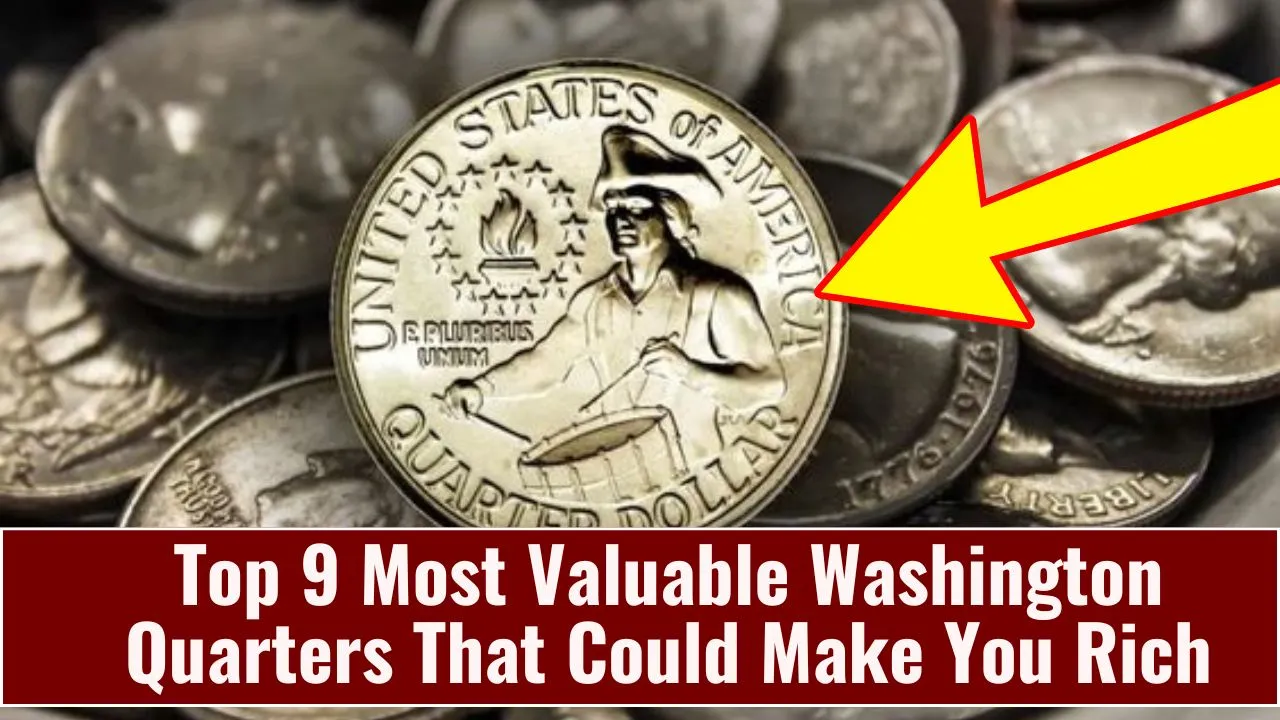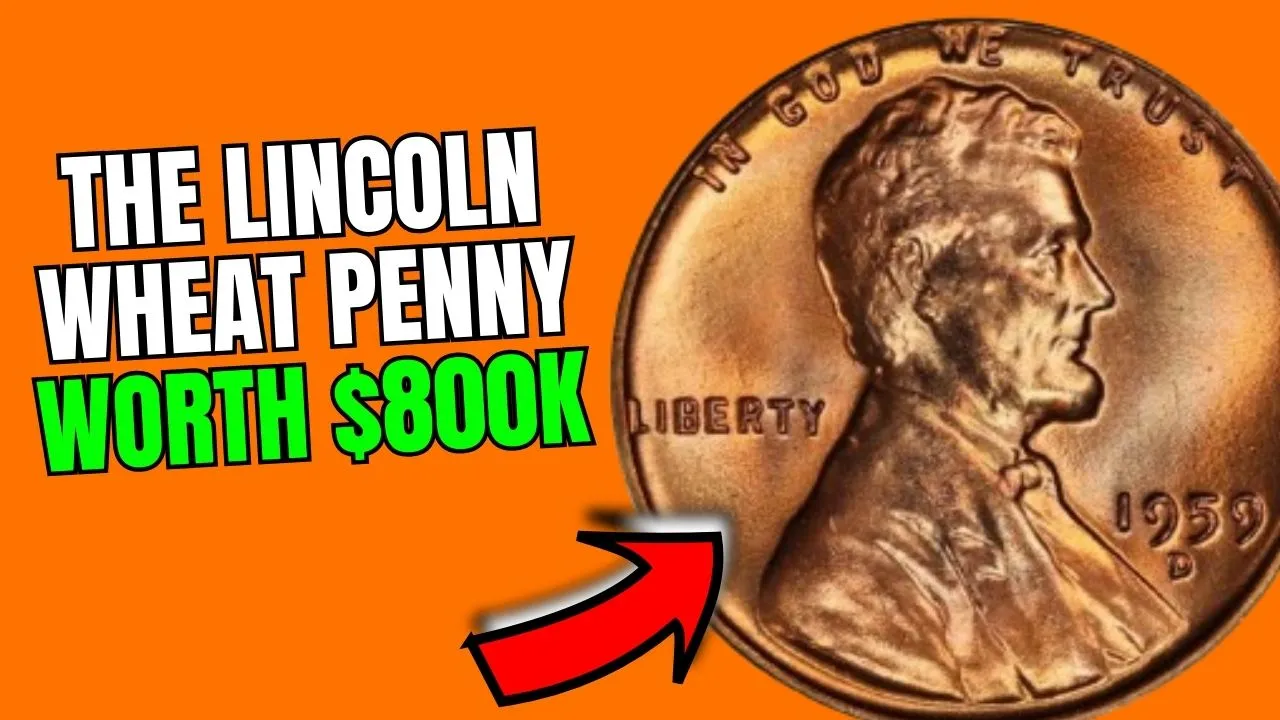Top 11 Most Sought-After Wheat Penny Errors: Wheat penny errors are a treasure trove in the world of coin collecting. These rare mistakes, made during the minting process, turn ordinary pennies into valuable collectibles. From copper pennies minted during wartime to double-struck dates, these coins can be worth thousands—or even millions—of dollars.
In this article, we’ll explore 11 of the most sought-after wheat penny errors that collectors dream of finding. Each coin has its unique backstory and value, making them a fascinating part of numismatic history. Whether you’re a seasoned collector or a beginner, discovering these rare pennies could add both value and excitement to your collection.
Overview of the Top 11 Wheat Penny Errors
| Wheat Penny Error | Description | Estimated Value |
| 1943 Copper Wheat Penny | Rare copper penny minted during a year of steel pennies | $100,000 – Over $1 million |
| 1944 Steel Wheat Penny | Steel penny struck when copper was reintroduced | $100,000 – $500,000 |
| 1955 Double Die Wheat Penny | Double strike creating noticeable doubling on date and lettering | $1,000 – $10,000+ |
| 1922 No D Wheat Penny | Missing Denver Mint mark due to minting error | $1,500 – $25,000 |
| 1942/1 Overdate Wheat Penny | Overstruck date with the previous year’s number | $500 – $5,000 |
| 1937 Doubled Die Wheat Penny | Doubling of images on the coin’s obverse | $500 – $3,000 |
| 1924-D Double Die Obverse | Doubling on the word “LIBERTY” and the year | $2,000 – $10,000 |
| 1941/40 Overdate Wheat Penny | Overdate error with the “40” struck over by “1” | $300 – $2,000 |
| 1936 Doubled Die Reverse | Doubling on the reverse, especially “E PLURIBUS UNUM” | $500 – $2,500 |
| 1914-D Strong Doubled Die Wheat Penny | Doubling on the obverse, increasing the coin’s rarity and value | $2,500 – $10,000+ |
| 1950-D Reverse Die Break | Die break causing a crack or gap on the reverse | Up to $1,000+ |
1943 Copper Wheat Penny
The 1943 copper wheat penny is considered the holy grail of wheat penny errors. During World War II, copper was reserved for military supplies, so pennies were made from steel that year. However, a few copper blanks were accidentally used, resulting in a rare and valuable coin. Only a handful of these pennies are known to exist, and their scarcity makes them worth over $1 million at auction. Finding one of these coins would be a life-changing discovery for any collector.
1944 Steel Wheat Penny
While the U.S. Mint returned to copper pennies in 1944, a few steel blanks from the previous year were mistakenly used to produce pennies. These 1944 steel wheat pennies are incredibly rare and highly desirable. Depending on their condition, these coins can sell for between $100,000 and $500,000, making them a prized possession for collectors searching for rare wheat penny errors.
1955 Double Die Wheat Penny
The 1955 double die wheat penny is famous for its bold doubling of the date and lettering. This error occurred when the coin die was struck twice, creating a noticeable overlap. Collectors prize this coin because the doubling is easily visible without magnification. Depending on its condition, this penny can fetch anywhere from $1,000 to more than $10,000. Its distinct appearance and historical significance make it a must-have for any collection.
1922 No D Wheat Penny
The 1922 no D wheat penny stands out because it lacks the “D” mint mark that indicates it was produced at the Denver Mint. This error happened due to a worn-out die, which failed to leave the mint mark on some coins. Because of its rarity, collectors are willing to pay between $1,500 and $25,000 for well-preserved examples. The 1922 no D wheat penny is a key piece in any collection focused on wheat penny errors.
1942/1 Overdate Wheat Penny
This overdate error occurred when a die meant for 1941 pennies was overstruck with the date for 1942. The overlapping numbers are visible upon close inspection, making this error both rare and valuable. Collectors seek this coin for its unique appearance and historical significance. Depending on its clarity and condition, the 1942/1 overdate wheat penny can sell for $500 to $5,000.
1937 Doubled Die Wheat Penny
The 1937 doubled die wheat penny features a noticeable doubling of images on the obverse side. This error happened when the die was struck twice during the minting process, causing the overlapping design. Collectors highly value this coin, which can sell for between $500 and $3,000 depending on its condition. The distinct doubling makes this coin a standout among other wheat penny errors.
1924-D Double Die Obverse
The 1924-D double die obverse wheat penny is a rare error that shows doubling on the word “LIBERTY” and the date “1924.” This error occurred when the die was struck twice, resulting in overlapping elements on the obverse side. Collectors appreciate this coin for its clear and distinct doubling. Depending on its condition, it can be worth anywhere from $2,000 to $10,000, with pristine examples fetching higher prices.
1941/40 Overdate Wheat Penny
The 1941/40 overdate wheat penny features an overlapping of the “40” from the previous year, struck over by the “1” for 1941. While not as widely known as other overdate errors, this coin is still highly sought after by collectors. Its value ranges from $300 to $2,000, depending on its condition and the clarity of the overdate. Collectors often look for this unique error when building a comprehensive collection of wheat penny errors.
1936 Doubled Die Reverse
Unlike other doubled die errors, the 1936 doubled die reverse wheat penny shows doubling on the coin’s reverse side, particularly in the phrase “E PLURIBUS UNUM.” This error occurred when the die struck the coin twice, creating a noticeable overlap in the lettering. Collectors value this coin for its distinct design and rarity, with prices ranging from $500 to $2,500 depending on its condition.
1914-D Strong Doubled Die Wheat Penny
The 1914-D wheat penny is already valuable due to its low mintage, but the version with strong doubling on the obverse is even more desirable. This error caused the design elements, including the date and lettering, to appear doubled. Because of its rarity and historical significance, collectors are willing to pay $2,500 to over $10,000 for well-preserved examples. This coin is a highlight in any collection focused on rare wheat penny errors.
1950-D Reverse Die Break
The 1950-D wheat penny with a reverse die break is a unique error that occurred when part of the die broke during the minting process. This break caused a crack or gap to appear on the coin’s reverse side, making it a distinct and valuable collectible. Although less common than other errors, this coin can still fetch up to $1,000 or more, depending on the severity of the die break and the coin’s overall condition.
Why Wheat Penny Errors Are Valuable
Collectors value wheat penny errors because of their rarity, historical significance, and unique appearance. These coins were produced during a time when the minting process was less automated, leading to more frequent errors. The limited number of error coins that exist today makes them highly desirable, with some examples selling for thousands—or even millions—of dollars. For collectors, owning one of these rare pennies is not only a financial investment but also a piece of American history.
FAQs
1. What is the rarest wheat penny error?
The rarest wheat penny error is the 1943 copper wheat penny, which can be worth over $1 million due to its scarcity and historical significance.
2. How can I identify a wheat penny error?
Carefully examine your coin with a magnifying glass, looking for signs of doubling, missing mint marks, overdates, or unusual cracks. Professional coin grading services can authenticate and appraise your coin.
3. Where can I buy or sell wheat penny errors?
You can buy or sell wheat penny errors through coin dealers, online marketplaces like eBay, or numismatic auction houses. Always ensure that your coin is authenticated and graded to get the best price.
4. Are all wheat penny errors valuable?
Not all wheat penny errors are valuable, but rare and well-preserved examples can be worth thousands of dollars. The value depends on the coin’s rarity, condition, and demand among collectors.
5. How can I protect my wheat penny collection?
Store your coins in protective holders or albums to prevent damage. Avoid cleaning your coins, as this can reduce their value. Keep your collection in a cool, dry place to prevent tarnishing.
Conclusion
Wheat penny errors are a fascinating and valuable part of coin collecting. From the legendary 1943 copper penny to the elusive 1955 double die, these error coins capture the imagination of collectors worldwide. Each coin tells a unique story of minting mistakes and historical events, making them more than just collectibles—they’re pieces of American history. If you’ve found a rare wheat penny or have questions about collecting, share your experience in the comments below. And don’t forget to explore more articles on rare coins and collectibles—you might just discover your next great find!







